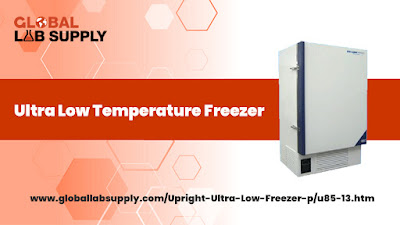To more complex things like cells and tissues, biomolecules such as oligonucleotides and proteins have thermal sensitivity. Ultralow temperature (ULT) freezers must be utilized to keep these materials at -80°C so that they may be examined and characterized. Cryogenic freezers, which can maintain temperatures as low as -150°C, may be used to retain samples for long periods in some instances.
There are a slew of considerations to be made while making your final decision on a ULT freezer
- There are a few things to think about before investing in ULT freezers. In addition to the price, consider the freezer's size, footprint, and energy efficiency.
- The capacity of the ULT freezer is critical because it affects how many biological materials may be stored in the Laboratory Freezer. The larger the freezer's capacity, the more costly it will be to buy and operate.
- It is preferred if the ULT freezer takes up as little space as feasible, enabling the lab to utilize more of the available space for other purposes. ULT freezers that are upright rather than chest-shaped take up less shelf space.
- ULT freezers must keep a stable temperature because biological samples, such as patient tissue, are critical and challenging to obtain.
- The following components make up the user interface: Wi-Fi-enabled ULT freezers of modern models may be controlled from afar. This function might be helpful, for example, if you need to monitor the freezer temperature outside of regular working hours or if the pandemic prohibits you from going to the lab in person.
Because of technology developments, ULT freezers have improved
Biotechnology research relies heavily on the use of Ultralow Freezer. Consequently, their designs have become more imaginative to enhance their reliability and sample integrity while simultaneously reducing operating expenses and enhancing ergonomics.
Manufacturers are upgrading their designs to lower their carbon footprints as consumers become more aware of the carbon footprints generated by research institutions. Some compressors are also equipped with learning algorithms to optimize their energy consumption, making them even more energy-efficient as they become more common.
To reduce the formation of difficult-to-remove frost and ice, manufacturers have created new materials with anti-frost properties that improve temperature uniformity while also making maintenance easier.

No comments:
Post a Comment